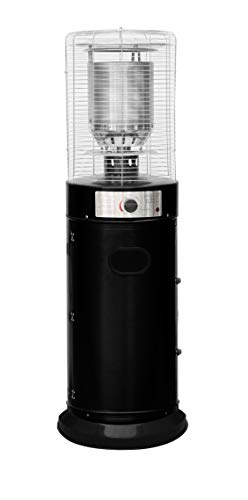The Top Reasons People Succeed On The Patio Heating Systems Industry

Patio Heating Systems: A Comprehensive Guide
As outdoor home progress into extensions of our homes, creating a comfy and inviting atmosphere is paramount. Among Alfresco Heating to accomplish this convenience is by carrying out patio heater. These systems permit friends and families to enjoy their outdoor spaces year-round, no matter the chill of the night air. This short article will explore numerous patio heating systems available, their functions, advantages, and important considerations for picking the ideal one.
Kinds Of Patio Heating Systems
Patio heater can be found in various forms, each with its own unique characteristics. Below are a few of the most typical types:
| Type | Description | Pros | Cons |
|---|---|---|---|
| Electric Patio Heaters | These heaters run using electricity and come in wall-mounted, portable, and freestanding models. | Easy to set up and utilize; instant heat; safe; low maintenance | Limited heat range; may increase electrical energy bill |
| Gas Patio Heaters | Usually powered by propane or natural gas, gas patio heaters provide significant heat output and can cover big areas. | High heat output; can last longer than electrical models; suitable for huge gatherings | Needs gas supply; can be less portable; safety interest in gas leaks |
| Infrared Heaters | Infrared heaters discharge thermal radiation that straight warms objects and individuals instead of the surrounding air. | Efficient; immediate heat; very little heat loss; environment-friendly options available | Limited area of result; initial cost might be high |
| Fire Pits | Often made of stone or metal, fire pits provide heat and ambiance, creating a relaxing atmosphere. | Natural ambiance; versatile (cooking choice); collect around for social interactions | Security risks with open flame; require wood or propane supply |
| Patio Umbrellas with Heaters | These are umbrellas fitted with integrated heating elements, perfect for shaded areas. | Practical; combines shade and heating; portable | Less effective in windy conditions; minimal location; can be pricey |
Secret Features to Consider
When choosing a patio heater, it is necessary to examine different features based on individual preferences, budget, and outdoor space requirements. Here are some aspects to think about:
- Heating Capacity: Measured in BTUs (British Thermal Units), this determines the heat output of the heater. Select a heater with sufficient BTUs for your outdoor size.
- Fuel Type: Decide between electric, gas, or wood-burning options based on benefit, schedule, and effectiveness.
- Portability: If movement is essential, search for light-weight or wheeled designs for simple transportation.
- Maintenance: Consider the upkeep needed for each type. Electric heaters normally need less maintenance than gas or wood options.
- Safety Features: Look for systems with safety cut-offs, protective screens, and materials that can withstand outdoor conditions.
Advantages of Patio Heating Systems
Patio heating systems offer several benefits, making it possible for homeowners to take full advantage of making use of their outdoor living areas. Some benefits include:
- Extended Outdoor Use: Heaters permit more time invested outside, even during cooler seasons.
- Increased Comfort: Provide a warm and welcoming environment for events, celebrations, or peaceful nights.
- Enhanced Aesthetics: Many heater designs add a stylish touch to outdoor design.
- Increased Property Value: Homes with well-equipped outdoor spaces may draw in greater worth and attract potential buyers.
- Versatile Options: With various styles and designs available, there is a heating solution for each kind of outdoor setting.
FAQs About Patio Heating Systems
1. How much does it cost to operate a patio heater?
- Electric Models: This depends on the regional electrical power rates and use time. On average, running an electrical heater can cost in between ₤ 0.10 to ₤ 0.50 per hour.
- Gas Models: Propane costs vary, however a 20-pound tank typically lasts about 8-10 hours, costing around ₤ 20-₤ 30 to fill.
2. Are patio heaters safe to use?
A lot of modern patio heaters are developed with security functions. Nevertheless, it's necessary to follow safety protocols, such as sticking to clearances from flammable things, utilizing on steady surface areas, and guaranteeing proper ventilation for gas models.
3. Do patio heaters operate in windy conditions?
Most patio heaters can supply warmth in light winds, but strong gusts can lower their effectiveness and security. For Premium Heaters -wind locations, consider more steady models or utilize wind guards.
4. Can I utilize a patio heater indoors?
Utilizing outdoor heaters inside your home is not advised due to carbon monoxide gas risks, particularly with gas heaters. Always validate your heater's designated use guidelines before installation.
5. How do I preserve my patio heating unit?
Routine maintenance is important to guarantee longevity and efficiency:
- For electric heaters, check and clean up the heating component routinely.
- Gas heaters must have their gas lines inspected for leakages and filters cleaned up.
- Fire pits ought to be cleaned after usage and examined for any residue or ash accumulation.
Patio heating unit play an important function in changing outdoor spaces into comfy and inviting environments. With a variety of options, each with distinct benefits and functions, property owners can choose the best system based on their requirements, choices, and specific outdoor conditions. By purchasing a reliable patio heater, one can optimize satisfaction of their outdoor space throughout the year. Whether hosting summertime barbecues or cozying up on cool evenings, a warmed patio invites togetherness, relaxation, and enjoyment, making it a valuable addition to any home.

